Why Context Matters: The Significance of Contextual Targeting in Modern Advertising | 01 Jun, 2022
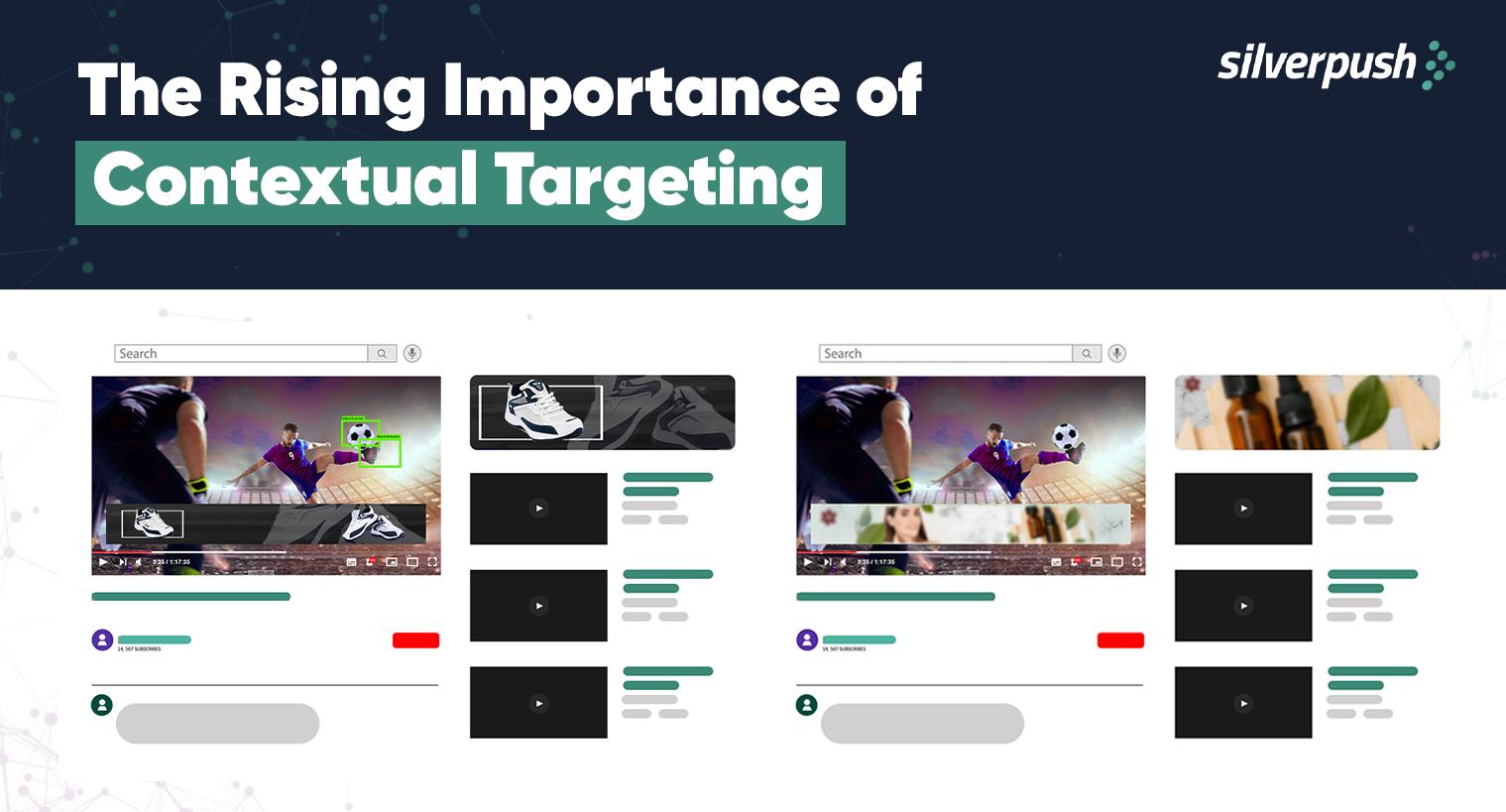
What happens when you are watching a video of a food blogger and an Uber Eats ad pops up? Will you click on the ad? The chances of this event are very high! The reason behind this is higher the relevancy of an ad served, the higher the chances of an engaged audience resulting in conversion. With the announcement of the ban on third-party cookies by major global companies like Apple, Firefox, and Google; ad-tech companies are striving to find new ways to display their ads without hindering users’ privacy. This is where contextual targeting steps in!
Before we move forward to explain the need for contextual ads and why it is gaining popularity these days, let me first walk you through their meaning, and how relevant ads are important for your campaigns.
What is Contextual Targeting?
Contextual targeting or advertising refers to the placement of a display ad on websites that are directly related to the product being offered in the ad.
Let’s understand this with an example. Have you ever come across a banner ad displaying flight bookings on a page offering tour packages in a country? If yes, you have experienced what contextual advertising is!
Simply put, in contextual advertising, the content of the ad is closely tied to the content of the site/page. It’s an old and simple strategy that wasn’t super popular earlier because its performance was lower than the ads that targeted contextual audiences using cookies.
Soon, it became the most dominant form of online advertising.
What are Relevant Ads?
According to Google, relevant ads or keyword relevance refers to how closely an advertising campaign matches a user’s search, based on the correlation between keywords, ads, and post-click landing pages. Relevant ads have the power to capture a user’s attention three times more effectively.
Additionally, contextually relevant ads have a greater likelihood of appearing in higher positions, generating more clicks, and leading to higher success rates for advertisers’ campaigns. Therefore, prioritizing the relevance of ads can be an effective strategy to increase the effectiveness of ad campaigns and drive greater ROI.
Problem With Behavioural Targeting Methods
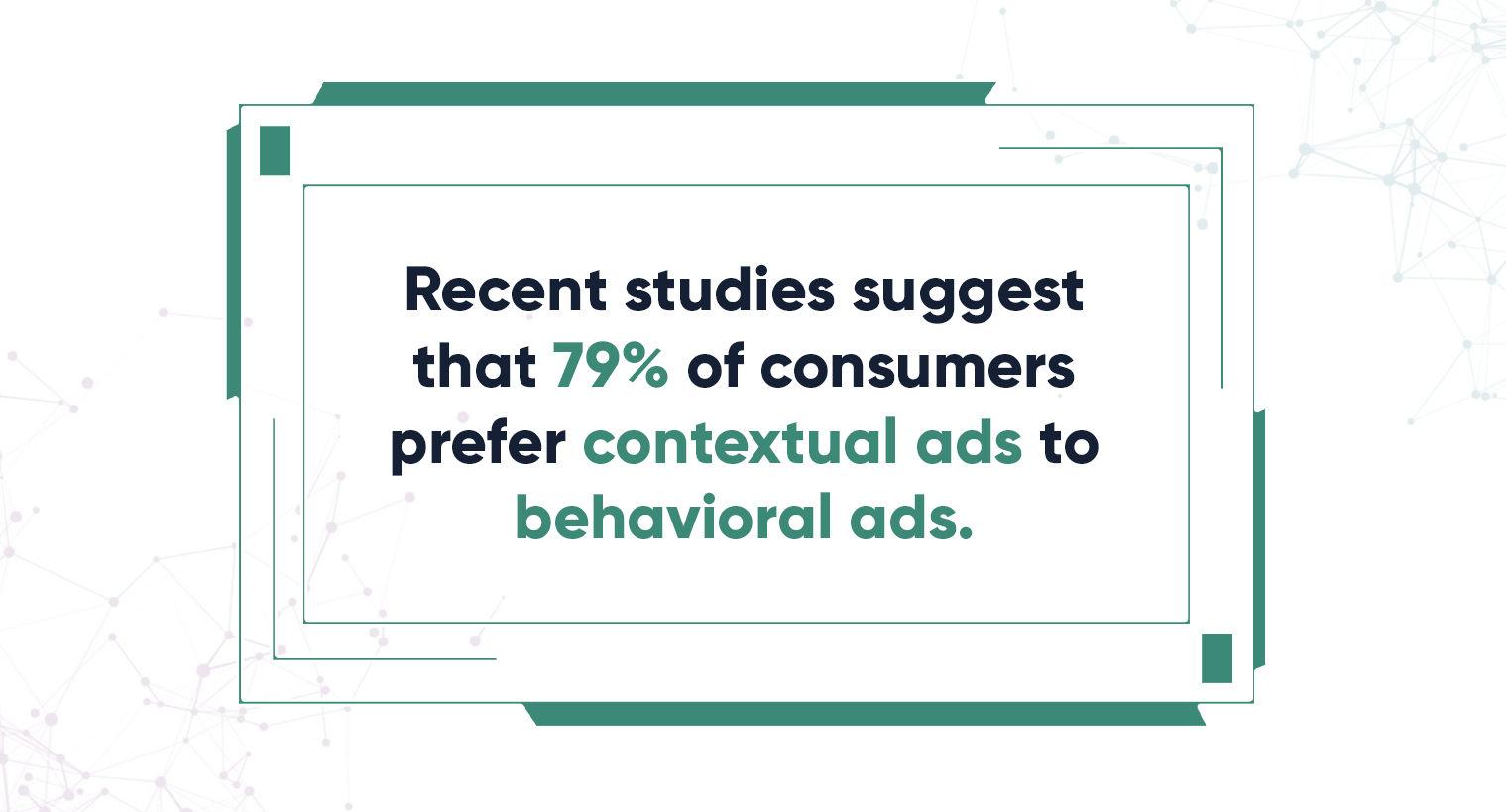
The difference between contextual and audience-based targeting comes down to intention. Contextual targeting is intended to increase user engagement by displaying ads that are relevant to the content being consumed, while behavioral targeting relies on users’ past browsing behaviors and interactions to serve personalized ads.
Personalized ads can sometimes creep out users who are uncomfortable with brands tracking their browsing history and habits. In fact, 66% of consumers have expressed discomfort with businesses and brands tracking their browsing history to serve them personalized ads.
By prioritizing contextual targeting over behavioral targeting, advertisers can create a more positive and comfortable user experience, while still delivering effective advertising messages that resonate with the user’s interests and needs.
Statistics Highlighting the Importance of Contextual Targeting
With privacy being at the top of the mind for advertisers, the importance of contextual advertisement and the relevancy of ads has never been more important!
1. According to reports and interviews with many people, the global market for Contextual Advertising estimated at US$199.8 Billion in the year 2022, is projected to reach a revised size of US$562.1 Billion by 2030, growing at a CAGR of 13.8% over the analysis period 2022-2030.
2. 49% of US marketers surveyed are using contextual marketing today.
3. Context is so powerful that 49% of brand marketers are looking to contextual targeting advertising to replace cookies.
4. Nearly 70% of consumers feel ads are more likely to be recalled when they appear next to relevant information.
5. 7 out of 10 viewers have said that consumer impression of an online ad and the brand linked with it is influenced by the content surrounding it.
6. When companies provide contextually appropriate ads, almost two-thirds (65%) of customers have a more favorable perception of those brands.
Why Should You Choose Contextual Targeting?
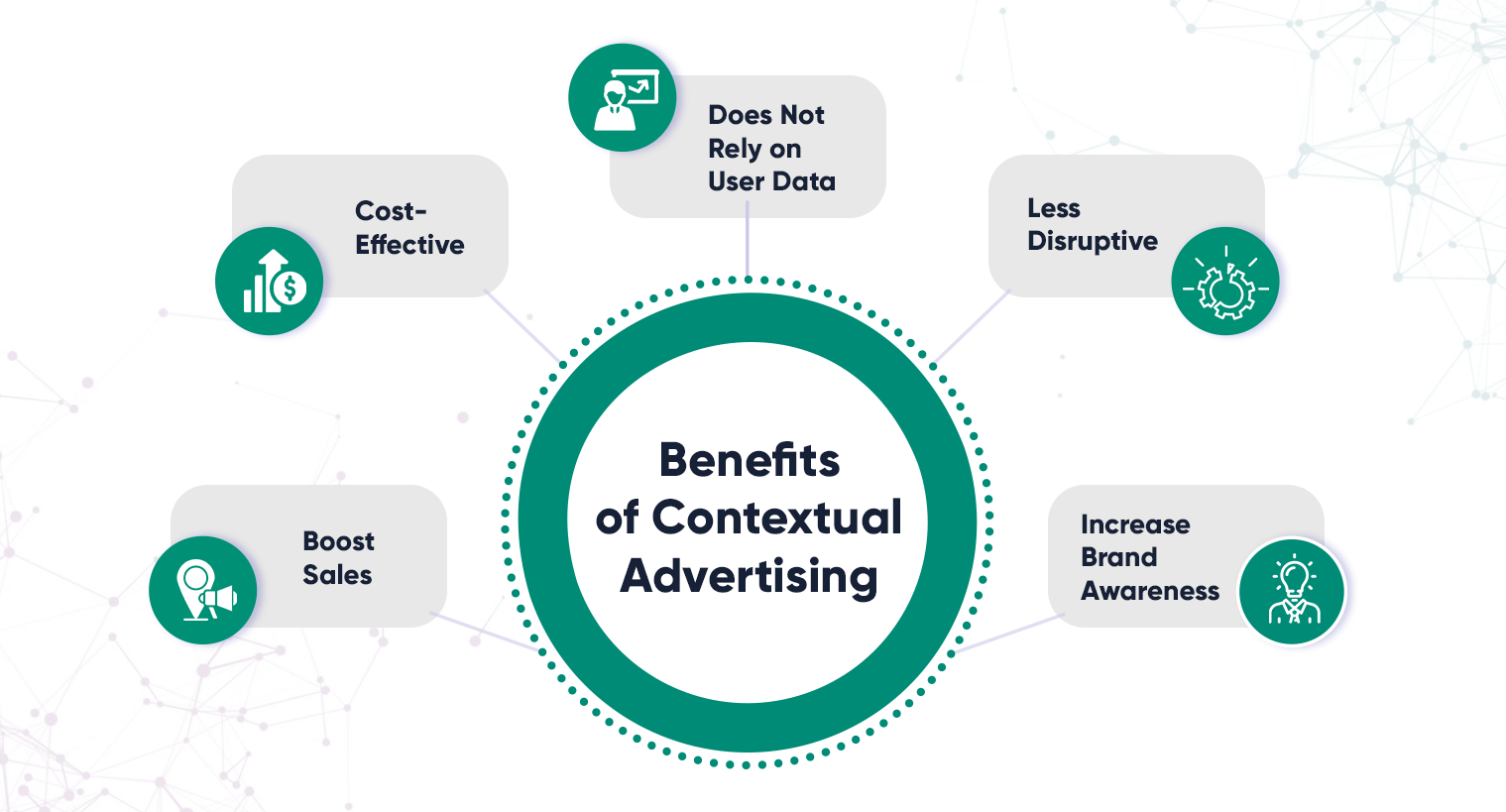
Contextual targeting is a demanded tool for companies that have helped them target their segmented audience group at the right time, moment, and platform.
About 65% of respondents said they would be more tempted to buy from online ads relevant to the web page they were currently viewing. Compared to this, only 35% said they would be tempted to purchase from an ad based on the content they had viewed in the last month.
Some of the benefits of contextual targeting that caused the new rise of contextual advertising are:
1. Unlike behavioral advertising, which requires users’ personal information, contextual targeting relies on less personal information. This makes it a secure and desirable option for most businesses that must adhere to privacy requirements such as GDPR.
2. Contextual advertising is less disruptive than typical banner ads since they are particularly targeted at an audience who is interested in the content of the page/video.
3. Unlike traditional advertising strategies, contextual advertising is cost-effective and does not hurt the advertisers’ pockets.
4. Contextual ad targeting is the most effective way to increase product sales by achieving its primary goal of reaching the targeted demographic. This occurs as a result of a good study on keywords, keyword phrases, and the application of AI technology.
5. When people visiting the websites see ads that are relevant to the content, the product’s brand recognition increases. This in turn leads to larger audience engagement and improves the company’s income through increasing sales.
How does Contextual Advertising Work?
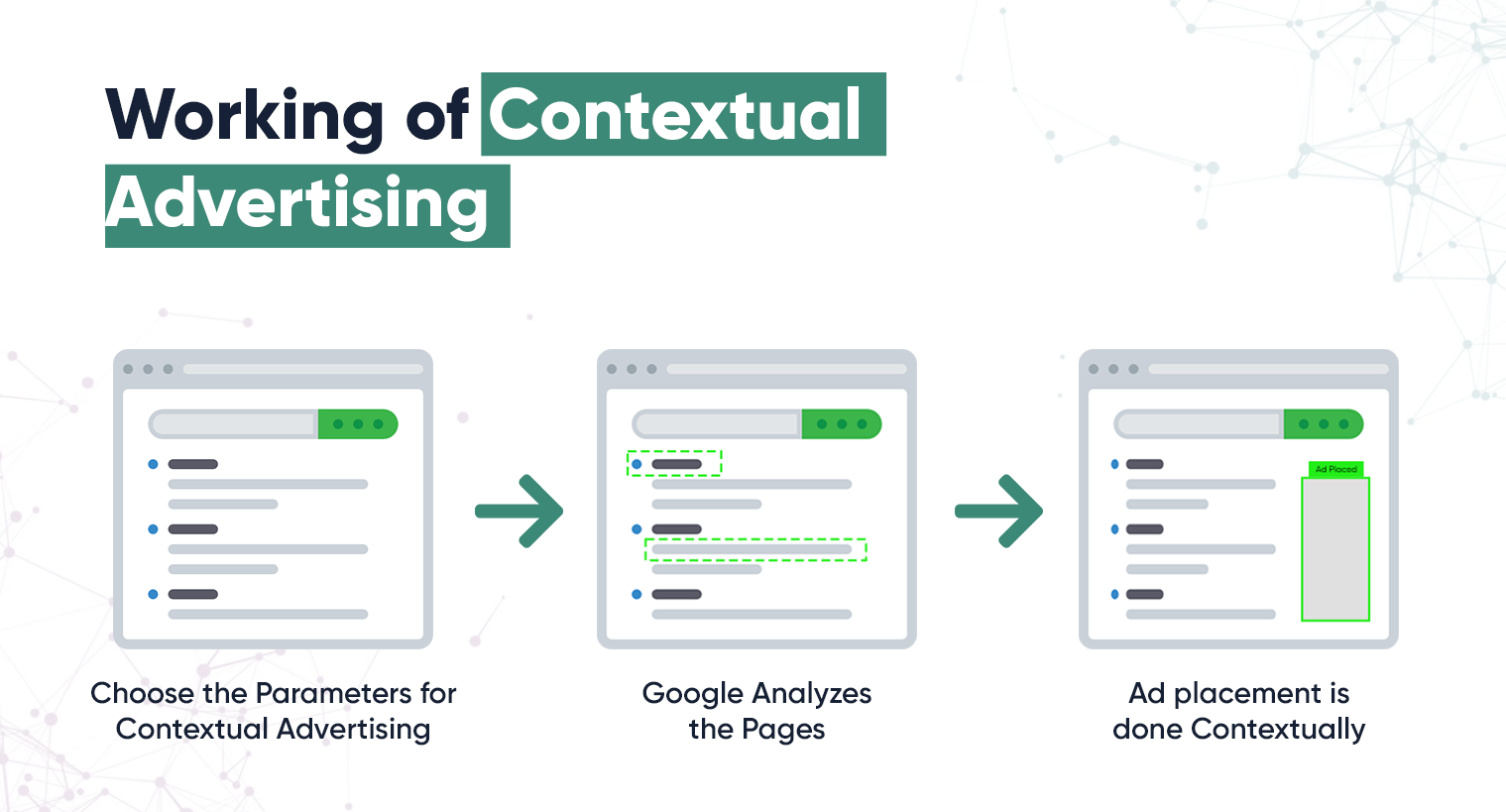
Now, here comes the real deal! Here, we have explained the workings of contextual advertising and the methodology behind it. It generally involves the process of contextual targeting through a demand-side platform that will place your ads on platforms that match the allocated parameters.
This is how the process works:
1st Step: Choose the Parameters for Contextual targeting
Keyword selection is an important step in this process. You need to target keywords, as well as topics and phrases to the Display Network ad groups. At first, you can start broad like ‘Autos & Vehicles’ and then can get more specific like ‘Trucks & SUVs’, or ‘Commercial Vehicles’, etc.
This is done to precisely target your topic and sub-topics. As per the research done by Google, each campaign should use 5-50 keywords, including negative keywords to help the network match your ad to website content.
2nd Step: Google Analyzes the Pages
Once you place an order, Google analyzes the pages to the web page which matches your ad with the most relevant content. In case, you target keywords in the same ad group, your content is displayed first when Google selects where to show your ads.
3rd Step: Ad placement is done Contextually
After Google analyzes your ad, the display network will find the placement of your ad contextually. For example, when keywords, as selected by you, match the central theme of a website, or the concept of that site, your ad is then shown up on that website.
Third-Party Cookies Out, Contextual Advertising In

Consumers worldwide are becoming more informed and public and governmental demands are increasing on the advertisement industry to restrict or limit the gathering of user data.
As a result, cookie-based ad targeting is becoming increasingly difficult, and many internet browsers are now taking steps to limit cookie use.
With GDPR and CCPA legislation requiring greater use of personal data and privacy protection, there is an increase in demand for contextual targeting.
The best part about contextual advertisements is that they do not require any personal information from consumers to target them. Instead, they analyze session data, such as a user’s current webpage, to establish the individual’s intentions and interests. Interpretative data is obtained from the user’s activity.
Brand Safety and Suitability – Important Part of Contextual Targeting
According to a study, 43 percent of customers have stopped doing business with a brand in which they have lost trust.
Brand safety and suitability are critical for maintaining a brand’s reputation in the digital advertising space. In today’s digital world, customers are quick to lose trust in brands that fail to ensure brand alignment, which can result in losing clients. It is, therefore, essential to protect the brand at all costs.
To ensure brand safety, digital marketers, agencies, and media need to implement effective brand safety policies. These policies should aim to prevent the brand’s ads from appearing next to harmful or inappropriate content online.
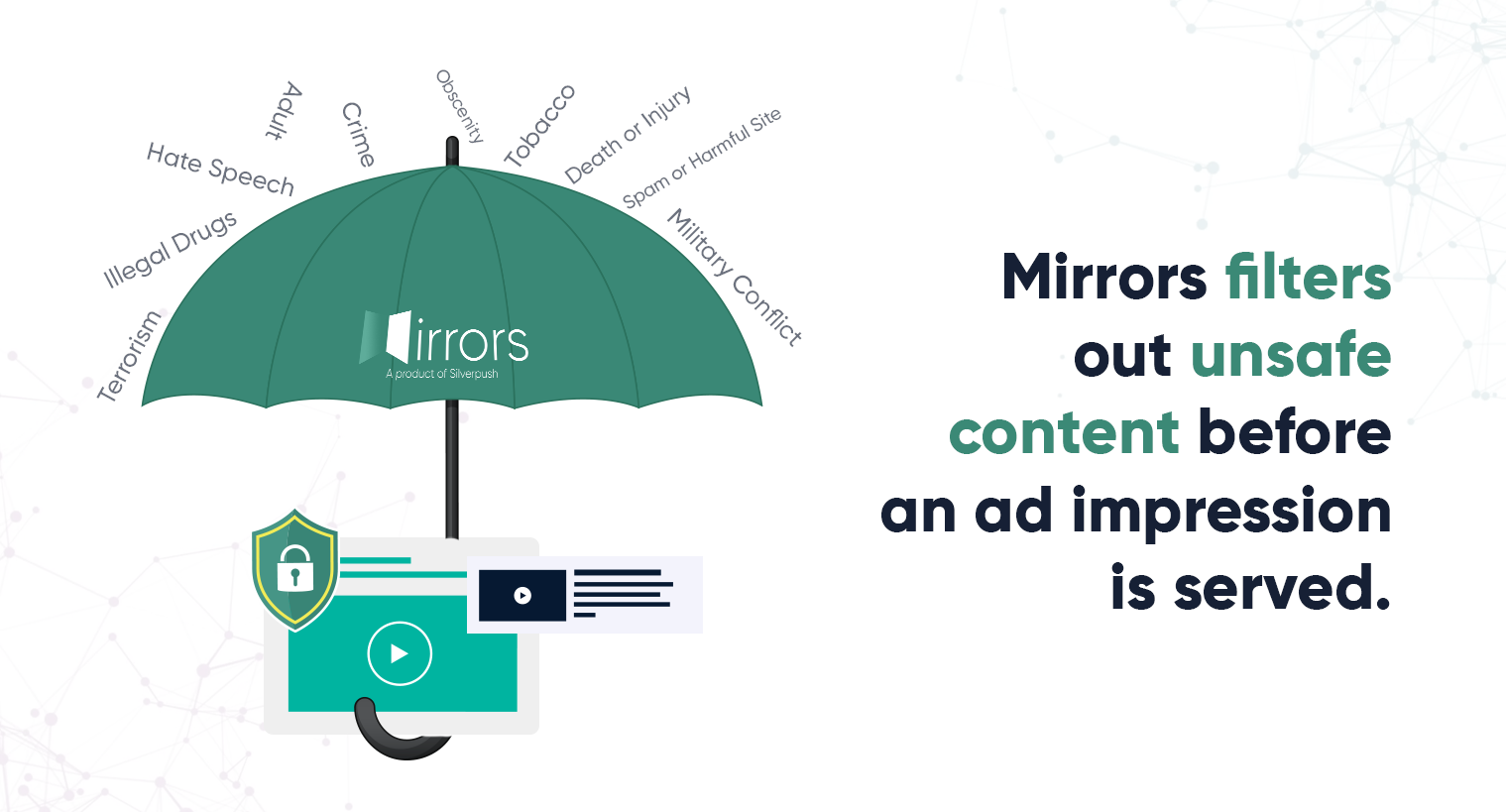
One way to achieve this is through context-based controls that target safe, acceptable, and brand-building content. Digital marketers should prioritize brand suitability to protect the brand’s reputation and build a positive brand image in the minds of their target audience.
To help achieve this, Silverpush’s contextual targeting solutions can be a valuable tool. Silverpush’s solutions use advanced algorithms to analyze and understand the context of a web page or video and determine its suitability for a particular brand. This helps ensure that the brand’s ads appear only on appropriate content and not on content that could damage the brand’s reputation.
Silverpush – Placing Ads in Contextual Moments
With third-party cookies being phased out, it has become even more important for ad-tech companies to find better ways to engage with customers, the alternative to this is contextual targeting!
Know Mirrors
Silverpush’s flagship product, Mirrors is an AI-powered contextual targeting solution that focuses on serving personalized ads to the audience in a completely brand-safe environment. Initially, it was available on YouTube, now its contextual and brand-safe solutions are available on the OpenWeb and social platforms as well. It enables the processing of large volumes of data at speed, with better context, at a higher scale, and improved targeting efficiency.
How Mirrors Can Help in Reaching Your Relevant Audience?
Mirrors’ AI-powered technology identifies key contexts like celebrities, brands, objects, actions, and other factors for a nuanced level of targeting at the video level. Its unique custom identifying capabilities ensure that reach is not duplicated, and a unified approach is followed for content-aligned ad placement, brand safety, and custom brand suitability.
It can block ad placements against unwanted, unsuitable, irrelevant, and harmful content.
These solutions can provide the highest accuracy to not let a single damaging ad placement pass through, by using word-by-word parsing of video content. An example of this is its tie-up with IKEA, where it helped the company achieve CTR of 0.55% and 104% view rates with Mirrors.
To know more about Silverpush and its AI-powered solutions, fill out the form on the right and an expert from our team will contact you soon.

BLOGS
Migrate from Oracle to Silverpush: Unlock Advanced Contextual Advertising Solutions
The news that Oracle plans to shut down its advertising business by the end of September has sent shockwaves through the ad industry. Once the most prominent advertising data seller in the market, Oracle is now closing its advertising division. This included Datalogix for offline consumer data, Grapeshot for contextual ...

BLOGS
Cannes 2024 Recap: Silverpush Takes AI Discussions to the French Riviera
As Cannes 2024 concludes, the echoes of vibrant discussions, insightful panels, and significant meetings continue to resonate. This year’s central theme was clear: AI's growing dominance in advertising solutions, optimizing campaigns for business outcomes, and reaching audiences effectively across various screens. With videos becoming increasingly digital, the potential for more addressable ...

BLOGS
UK Programmatic Advertising Spending & Trends in 2024
In 2023, programmatic advertising spending in the UK reached roughly £30.6 billion. The programmatic display advertising market is projected to grow by 12.6% in 2024, bringing it to within just four percentage points of becoming fully programmatic. This highlights how integral this technology has become to the UK ad industry. ...







